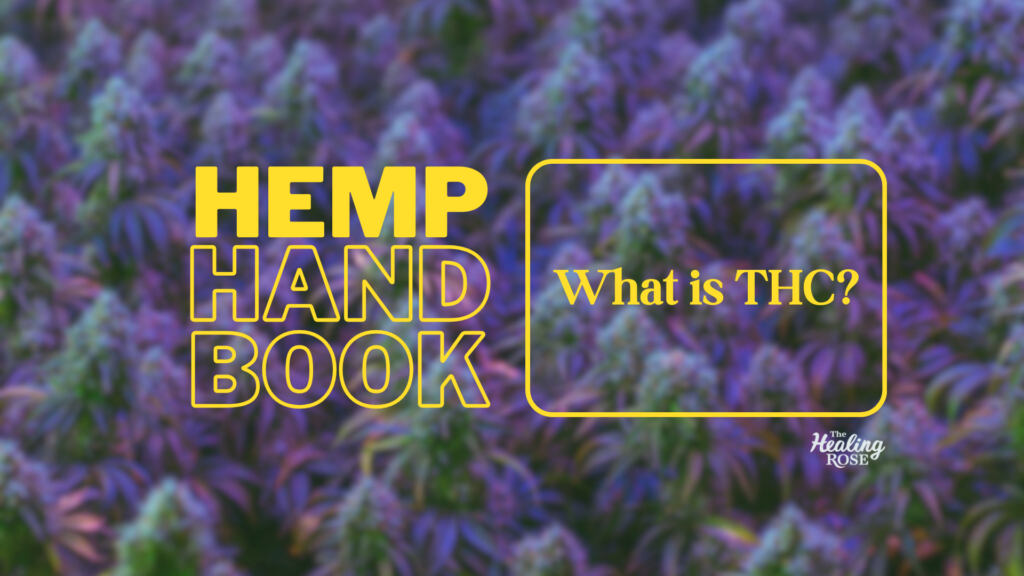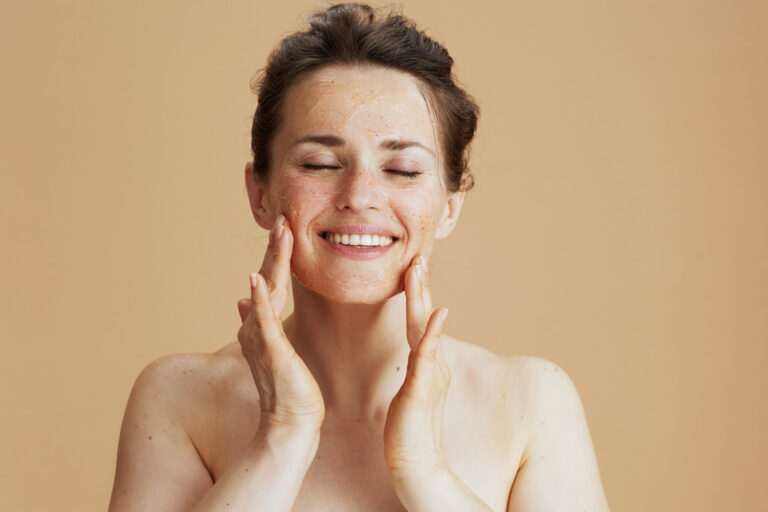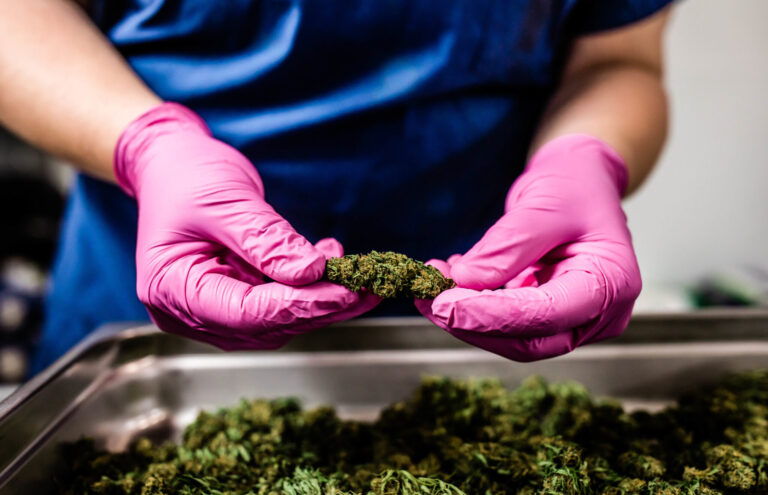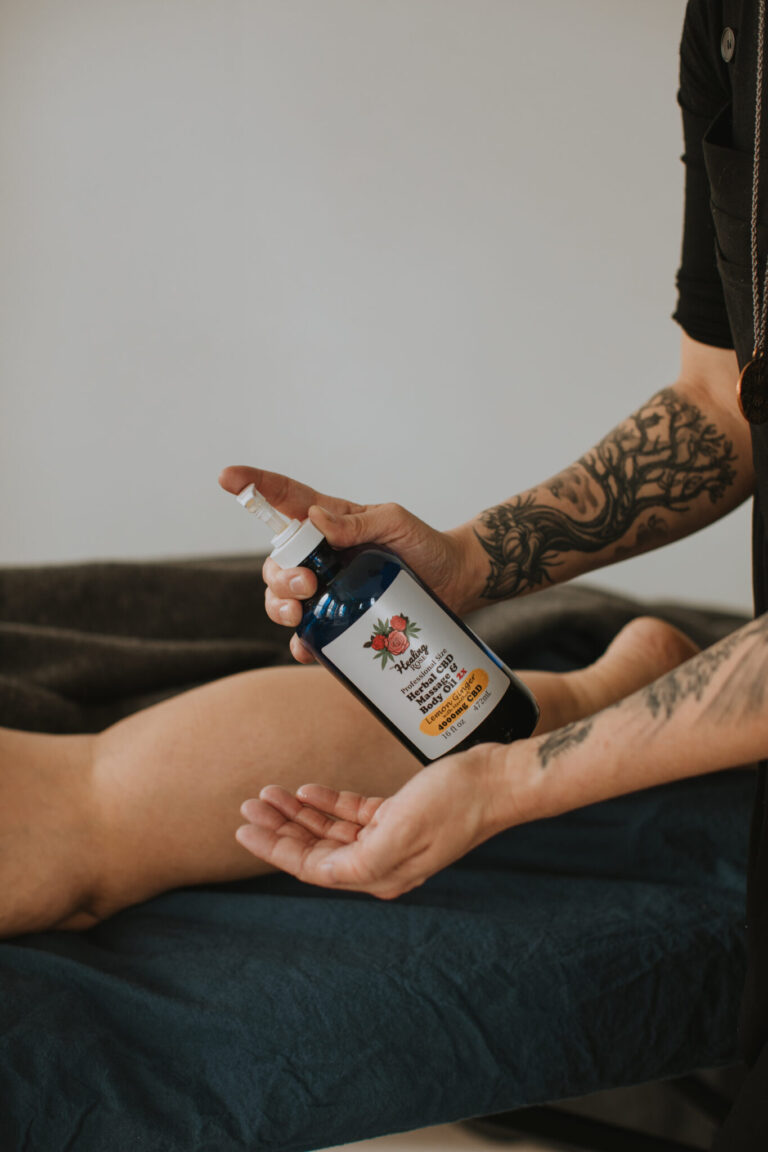
Tetrahydrocannabinol, commonly known as THC, is the primary psychoactive component of cannabis. It’s what makes weed, well, weed. The unique high produced by THC drove the cannabis plant’s history as a religious herb, and continues to drive recreational and spiritual use in the modern world. This edition of The Hemp Handbook from The Healing Rose examines this crucial cannabinoid, exploring what makes THC special, how it is used, and how it interacts with other chemicals produced by the cannabis plant.
What is THC?
Tetrahydrocannabinol is one of more than 100 cannabinoids that have been identified. THC occurs naturally as its precursor tetrahydrocannabinolic acid (THCA) in live cannabis, and is decarboxylated – the chemical sheds a carboxyl group – through the drying process. Cannabis flowers sold for consumption are dried in order to decarboxylate naturally occurring THCA.
Though THC forms naturally, it does not appear uniformly across cannabis plants. Strains are commonly divided into indica and sativa, and can differ widely in THC concentrations. Legacy cannabis consumers may prefer indica or sativa for their respective properties and balance of THC to CBD.
Both varieties have long histories tied to their original geographies in the arid mountains or lush jungles of Asia. Today, however, most commercially popular strains are hybrids grown in greenhouses across climates and regions. Recently it has been discovered that what we thought about indica and sativa strains, meaning that indicas are best for sleep and relaxation and sativas are for energy and uplifting one’s mood – is actually antiquated thinking. It may be more about the terpene profiles of the particular strains – which is something we will cover in a future Hemp Handbook article.
As commercial operators have sought to optimize crop yield, THC as a percentage of dry weight has risen up from 4% in 1980 to an average of 16% today. Cannabis is more potent than ever before. This trend is controversial among cannabis growers and consumers, and has led to an increase in phenohunting for terpenes, minor cannabinoids, scent, and flavor.
Because THC, and how we experience it, is what makes weed weed, it is both the most popular product of the cannabis plant and the most politically charged.
How legal is THC?
The legal status of THC is fuzzy, because cultivation, sale, and consumption of cannabis today remains illegal at the federal level in the United States. As states have created their own programs for decriminalization, medical care, and legal recreational use Congress has acknowledged a policy gap, and federal agencies have turned their focus on organized criminal networks rather than state licensed businesses or consumers.
The legal status of cannabis varies at the state level, led by some states such as California, Colorado, Michigan and Massachusetts with robust cannabis marketplaces. Many states encourage, assist, and even fund cannabis entrepreneurship in an effort to grow the cannabis ecosystem and economy. In Massachusetts, cannabis regulation is governed by the state’s Cannabis Control Commission (CCC).
Another policy gap, the 2018 Farm Bill, further muddies the legal waters. The 2018 Farm Bill legalized the cultivation of industrial hemp, a plant that is the same species as cannabis. Because hemp and cannabis differ only in their respective legal definitions – rooted in THC concentration – production of THC from hemp became de facto legal nationwide.
Here at The Healing Rose, THC is not featured in any of our products, but our full spectrum products are made with extracts that have just under 0.3% THC. This means that while our products do not get people high on THC, the entourage effect of having a wide spectrum of cannabinoids that includes THC can be experienced by customers using our full spectrum options. We do offer a variety of Broad Spectrum options as well for those sensitive to THC or who have to deal with drug testing and want non-detectable levels of THC in our products. Feel free to reach out to us to ask us how to identify which products are full spectrum and which are broad spectrum. You can also view our COAs (lab results) for all finished products to see the THC levels along with the levels of other cannabinoids.
How will THC make me feel?
As the primary psychoactive component in cannabis, THC produces the high associated with weed. Many users report feeling happy or relaxed, but adverse effects can occur as well, including feelings of anxiety. Finding the right dosage level is important and personal: THC affects every person differently.
The high brought on by THC is at the root of cannabis’ history as a spiritual plant. Consumers of the plant may feel a deeper spiritual connection, enhanced creativity or free associations, or feelings of inspiration. Different strains of cannabis are bred for varying levels of THC and for different concentration balances between THC, CBD, and other minor cannabinoids. This variance means that some strains can produce a more mellow high, while others may lead to a more energizing experience.
Is there a best way to use THC?
There is no one best way to consume cannabis or THC. Because THC affects different people differently, consumers may have a better experience with one consumption method or another. Many legacy users prefer smoking a joint, ripping a bong, or dabbing while many consumers who entered the market in the last several years have turned to gummies and other edibles.
THC can be used to produce topical products as well, such as creams or salves.
How does THC interact with other cannabinoids?
Like all cannabinoids, THC acts on the body’s endocannabinoid system. This can impact many physiological processes including pain, inflammation, hunger, energy, memory, and attention. Because THC and other cannabinoids like CBD, CBG, CBC, and CBN act on the same system, the balance of THC with these other chemicals can produce different effects.
Cannabinoids working in concert with one another is often called the entourage effect, and consumers often report that their high – or other sought after benefits – can be enhanced. Combinations with CBN, for example, may support more restful sleep.
At The Healing Rose, we emphasize thoughtful combinations of cannabinoids in our products. Curated formulations for different experiences and uses empower our customers with the synergy of the entourage effect and the unique benefits of different minor cannabinoids. Explore other articles in our Hemp Handbook series to learn about CBD, CBG, CBN, and THCV.
Copyright © 2025 The Healing Rose All Rights Reserved.
Site by CannaPlanners



